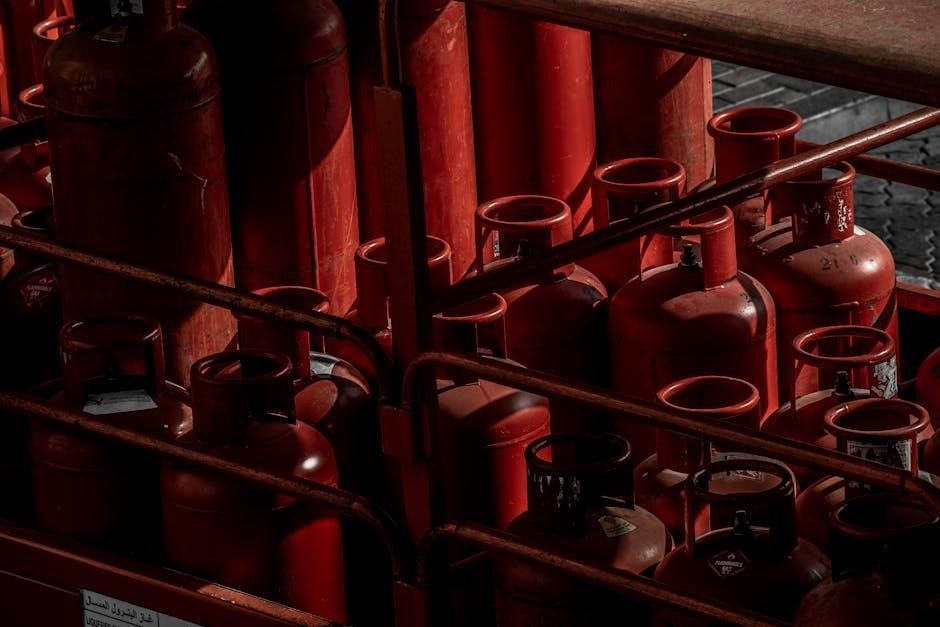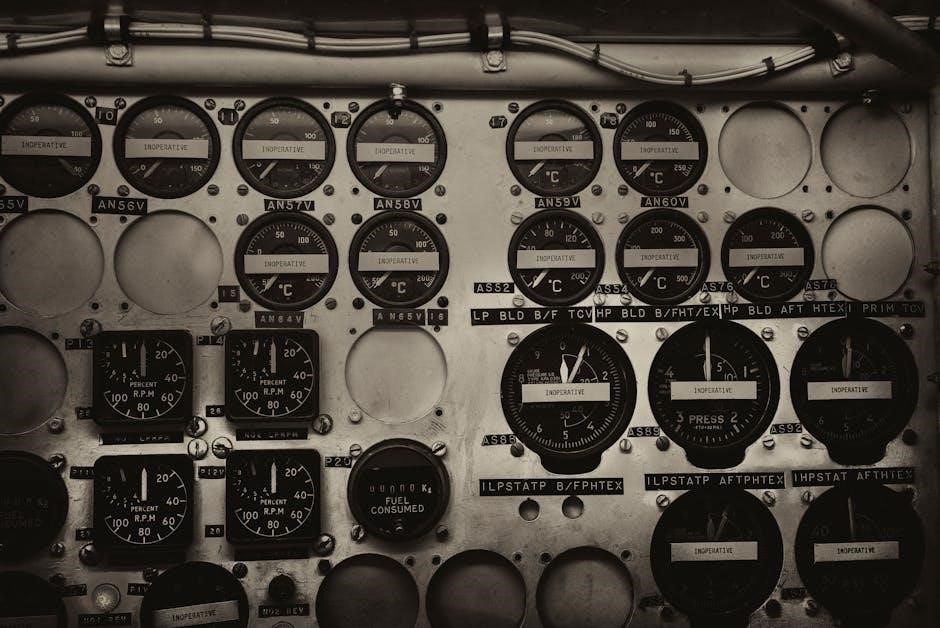Oklahoma Jury Instructions guide jurors on legal standards and principles to apply during trials. They ensure clarity, accuracy, and fairness in both criminal and civil cases.
Overview of Jury Instructions in Oklahoma
Oklahoma jury instructions are standardized guidelines provided to jurors to clarify legal principles and procedures. They are designed to ensure jurors understand their role and the law applicable to the case. These instructions are available for both criminal and civil proceedings, covering topics like evidence evaluation and damages allocation. Judges deliver these instructions at key trial stages, ensuring clarity and consistency. The Oklahoma Uniform Jury Instructions are regularly updated to reflect legal changes, making them a vital resource for fair and informed decision-making in court proceedings across the state.
Importance of Jury Instructions in the Legal Process
Jury instructions are crucial in ensuring the legal process remains fair and just. They provide jurors with clear guidelines on how to evaluate evidence and apply the law. Without these instructions, jurors might misunderstand legal concepts, leading to inconsistent verdicts. In Oklahoma, they are essential for both criminal and civil cases, helping jurors grasp complex legal principles. Accurate and clear instructions safeguard the rights of all parties involved, upholding the integrity of the judicial system and promoting public trust in the fairness of trials.

History and Development of Oklahoma Jury Instructions
Oklahoma Jury Instructions were established to provide standardized legal guidance. They have evolved over time, with recent updates in 2023 ensuring clarity and fairness in trials.
Evolution of Jury Instruction Standards in Oklahoma
The evolution of Oklahoma jury instruction standards reflects a commitment to clarity and accuracy. Over the years, updates have been made to align with legal reforms and ensure fairness. The 2023 revisions, for instance, modernized language and streamlined processes. These changes aim to enhance juror understanding while maintaining the integrity of the legal system. The Oklahoma Supreme Court and legislative reforms have played pivotal roles in shaping these standards, ensuring they remain relevant and effective in guiding jurors through complex legal principles.
Key Legislative Updates and Reforms
Oklahoma has implemented significant legislative updates to improve jury instruction standards. Recent reforms include the 2023 revision of the Oklahoma Uniform Jury Instructions, focusing on clarity and modernizing legal language. These updates aim to ensure jurors grasp complex legal concepts easily. Additionally, reforms emphasize the importance of uniformity across criminal and civil cases, reducing ambiguity. The Oklahoma Supreme Court and Legislature collaborate to review and approve changes, ensuring the instructions remain aligned with current laws and judicial practices, thus enhancing the fairness and efficiency of trials. These reforms underscore Oklahoma’s commitment to a just legal system.

Purpose and Structure of Jury Instructions
Jury instructions guide jurors on applying the law to facts, ensuring a fair trial. They outline roles, procedures, and legal standards, structured for clarity and understanding.
Role of Jury Instructions in Criminal and Civil Cases
In criminal cases, Oklahoma jury instructions outline the legal standards for guilt and penalties, ensuring jurors understand the burden of proof and elements of crimes. In civil cases, they clarify liability, damages, and evidence evaluation. These instructions are crucial for guiding jurors to render impartial verdicts based on the law, maintaining consistency and fairness across all trials. They ensure that both parties receive a just hearing, reflecting Oklahoma’s commitment to judicial integrity and legal precision.
Components of a Typical Jury Instruction
A typical Oklahoma jury instruction includes clear legal definitions, the burden of proof, and the elements of the crime or claim. It outlines the jury’s role, evidence evaluation, and applicable laws. Instructions often clarify key terms, such as “reasonable doubt” in criminal cases or “preponderance of evidence” in civil matters. They may also address procedural rules, like barring outside research. These components ensure jurors understand their duties and apply the law consistently, fostering fairness and accuracy in trial outcomes across Oklahoma’s judicial system.
Types of Jury Instructions in Oklahoma
Oklahoma jury instructions are categorized into criminal and civil types. Criminal instructions address elements of crimes and defenses, while civil instructions focus on liability and damages.
Criminal Jury Instructions
Criminal jury instructions in Oklahoma outline the legal standards and elements required for convicting a defendant. They detail specific offenses, such as crimes against public justice, and necessary defenses. These instructions ensure jurors understand the burden of proof and the prosecution’s responsibility to prove guilt beyond a reasonable doubt. Clarity and precision are crucial to prevent misinterpretation of the law. The instructions are regularly updated to reflect changes in legislation and legal precedents, ensuring they remain accurate and relevant to current judicial practices.
Civil Jury Instructions
Civil jury instructions in Oklahoma provide guidance for jurors on evaluating evidence and applying the law in civil disputes. They outline the burden of proof, liability standards, and damages calculation. These instructions ensure jurors understand the legal framework for resolving claims involving negligence, contracts, or property rights. Clarity is emphasized to help jurors grasp complex legal concepts. Regular updates reflect evolving laws and judicial decisions, ensuring instructions remain relevant and accurate. Properly drafted instructions are crucial for fair and consistent outcomes in civil cases, balancing the rights of all parties involved.

Process of Drafting Jury Instructions
Jury instructions are researched, written, and refined by legal experts to ensure clarity and legal accuracy. They are reviewed and approved to prevent ambiguity and ensure fairness.
Collaboration Between Judges and Attorneys
Judges and attorneys collaborate to draft jury instructions, ensuring they align with legal standards and case specifics. Attorneys propose instructions based on trial evidence, while judges review and refine them for clarity. This teamwork ensures instructions are accurate and unbiased. Open communication helps address complex legal issues, balancing the need for precision with jury comprehension. Their joint effort aims to provide clear guidance, enabling jurors to apply the law correctly. This collaborative process is essential for fair and consistent outcomes in Oklahoma trials.
Review and Approval Process
The review and approval process for Oklahoma jury instructions involves multiple stages to ensure accuracy and legal compliance. Proposed instructions are submitted to judicial panels and legal experts for evaluation. Each instruction is scrutinized for clarity, relevance, and adherence to current statutes. Revisions are made based on feedback to enhance understanding and fairness. Final approval is granted only after thorough vetting by both the judiciary and the bar association. This rigorous process ensures that instructions are both legally sound and accessible to jurors, maintaining the integrity of the judicial system.
Challenges in Crafting Effective Jury Instructions
Crafting jury instructions requires balancing legal accuracy with clarity. Complex laws and nuances often complicate the process, risking misunderstandings. Ensuring jurors grasp intricate concepts is paramount.
Ensuring Clarity and Accuracy
Clarity and accuracy are vital in Oklahoma jury instructions to ensure fairness and consistency. Instructions must avoid legal jargon and ambiguities, providing clear guidance for jurors. Judges and attorneys collaborate to refine language, ensuring complex concepts are accessible. The Oklahoma Uniform Jury Instructions are regularly updated to reflect legal changes, maintaining precision. Misleading or incomplete instructions can lead to unjust outcomes, emphasizing the need for meticulous drafting and review. Plain-English principles are increasingly applied to enhance understanding, ensuring jurors can apply the law correctly.

Addressing Complex Legal Concepts
Oklahoma jury instructions often grapple with intricate legal concepts, requiring precise explanation. Topics like criminal intent, negligence, and evidentiary standards demand clear definitions; Judges and attorneys must ensure instructions are both accurate and understandable, avoiding confusion. Complex terms are simplified without losing legal nuance. Visual aids and plain language are increasingly used to aid juror comprehension. Misinterpretation of such concepts can impact trial outcomes, highlighting the importance of effective communication. Regular updates to jury instructions reflect evolving legal standards, ensuring they remain relevant and accessible. This approach fosters fairness and clarity in the judicial process;

Impact of Jury Instructions on Trial Outcomes
Clear jury instructions guide jurors in applying the law, preventing misunderstandings. Ambiguous instructions can lead to unfair outcomes, emphasizing their critical role in ensuring justice.
Influence on Jury Decision-Making
Jury instructions significantly influence jurors’ understanding and application of the law. Clear instructions guide jurors in evaluating evidence, weighing testimonies, and applying legal standards. Ambiguity or complexity can lead to misinterpretation, potentially swaying decisions. Instructions outline the burden of proof, essential elements of charges, and definitions of legal terms, ensuring jurors base verdicts on accurate legal frameworks. Effective instructions minimize confusion, fostering fair and informed decision-making. Misleading or incomplete instructions, however, can result in unjust outcomes, emphasizing the critical need for precise and unambiguous language to ensure justice is served.
Consequences of Misleading or Incomplete Instructions
Misleading or incomplete jury instructions can lead to unjust trial outcomes. Jurors may misunderstand the law, misapply evidence, or overlook critical legal standards, resulting in wrongful convictions or acquittals. Such errors can undermine public confidence in the justice system. Appellate courts often overturn verdicts due to improper instructions, highlighting the importance of clarity and accuracy. Furthermore, misleading instructions can deny parties their right to a fair trial, potentially leading to retrials and increased legal costs, ultimately affecting the integrity and efficiency of the judicial process in Oklahoma.
Recent Reforms and Updates
Oklahoma has modernized jury instructions to enhance clarity and accessibility. Recent updates include simplified language and digital delivery methods, improving juror understanding and engagement with legal information.
Modernization of Jury Instruction Language
Oklahoma has undertaken significant efforts to modernize jury instruction language, ensuring clarity and accessibility. Recent updates emphasize plain-English terminology to simplify complex legal concepts. This initiative aims to enhance juror comprehension while maintaining legal accuracy. The revised instructions address modern legal issues and reflect current statutory changes. By streamlining language, Oklahoma strives to make jury instructions more understandable for all citizens, fostering a fair and transparent legal process. These reforms are part of a broader effort to improve the effectiveness of jury decision-making in both criminal and civil cases.
Technological Advances in Instruction Delivery
Oklahoma has embraced technology to enhance jury instruction delivery, ensuring clarity and accessibility. Digital platforms now provide jurors with easy access to instructions, reducing reliance on printed materials. Interactive formats, such as video presentations, are being explored to engage jurors and improve understanding. Additionally, real-time updates to instructions can be disseminated efficiently, keeping jurors informed of any changes. These technological advancements aim to streamline the legal process, making it more efficient and user-friendly for all parties involved. They also support the goal of ensuring jurors have the tools they need to reach fair and informed decisions.
Oklahoma Jury Instructions are vital for ensuring justice and fairness in legal proceedings. Continuous updates and technological advancements promise to enhance their clarity and effectiveness for future trials.
Future of Jury Instructions in Oklahoma
The future of Oklahoma jury instructions lies in modernization and technological integration. Efforts are underway to simplify legal language, making instructions more accessible to jurors. Digital platforms and interactive tools are being explored to enhance understanding and engagement. Additionally, ongoing collaboration between judges, attorneys, and legal experts will ensure instructions remain aligned with evolving laws and societal needs. These advancements aim to improve clarity, reduce confusion, and uphold justice, ensuring Oklahoma’s judicial system remains efficient and fair for all parties involved in future trials.







